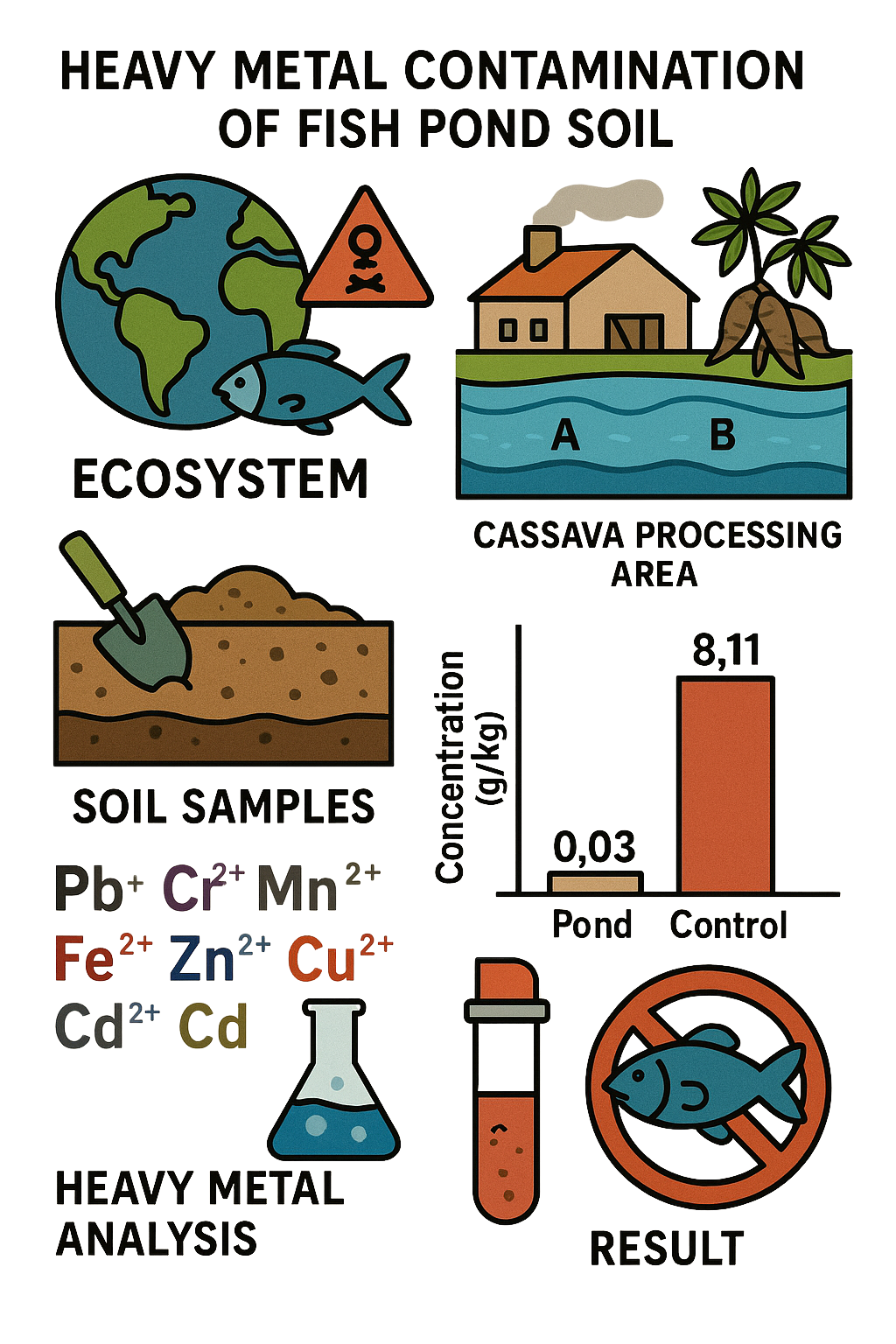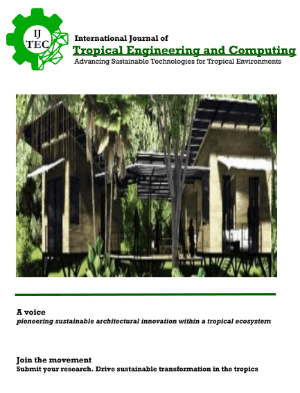Effects of Heavy Metal Content in the Fish Pond Soil Around Cassava Processing Area in Oja Oba, Igboora
DOI:
https://doi.org/10.60787/ijtec.vol1no1.39Keywords:
Contamination, Bio-accumulation, Heavy metals, Ecosystem, ProcessingAbstract
Heavy metal contamination and bio-accumulation in ecosystem is of great concern to human existence on earth. As human population increases, knowledge in science and technology increases, these increase exposure of living organisms to adverse effects of pollution due to heavy metals. This research was designed to access heavy metal present in the fish pond soil within the cassava processing area in Oja Oba, Igboora. This research was carried out at Oja Oba cassava processing area in Igboora. Soil samples were taken at dry fish pond within the experimental site. The pond is 6m wide and has a shallow depth of 0.91m. The fish pond was partitioned into two (A, B), C is a sixty meter (60m) outside the pond which represented control area. Twenty-one soil samples taken were analyzed for heavy metal content in a recognized laboratory. Heavy metal analyzed were lead (Pb2+), copper (Cu2+), chromium (Cr3+), iron (Fe2+), manganese (Mn2+), zinc (Zn2+), cadmium (Cd2+). Soil sample taken at side B of the pond at 4-6m range produced the highest significant lead (Pb3+) concentration of 8.11g/kg. The control produced the lowest significant lead (Pb3+) concentration 0.03g/kg. And due to high content of heavy metals in the pond, as recorded in the result of the soil analysis, it can be concluded that rearing of fish and consumption of fish reared in the pond is injurious to human being. Effluent treatment is also recommended for safety.
Downloads

Downloads
Published
Issue
Section
License
Copyright (c) 2025 International Journal of Tropical Engineering and Computing

This work is licensed under a Creative Commons Attribution-NonCommercial 4.0 International License.











